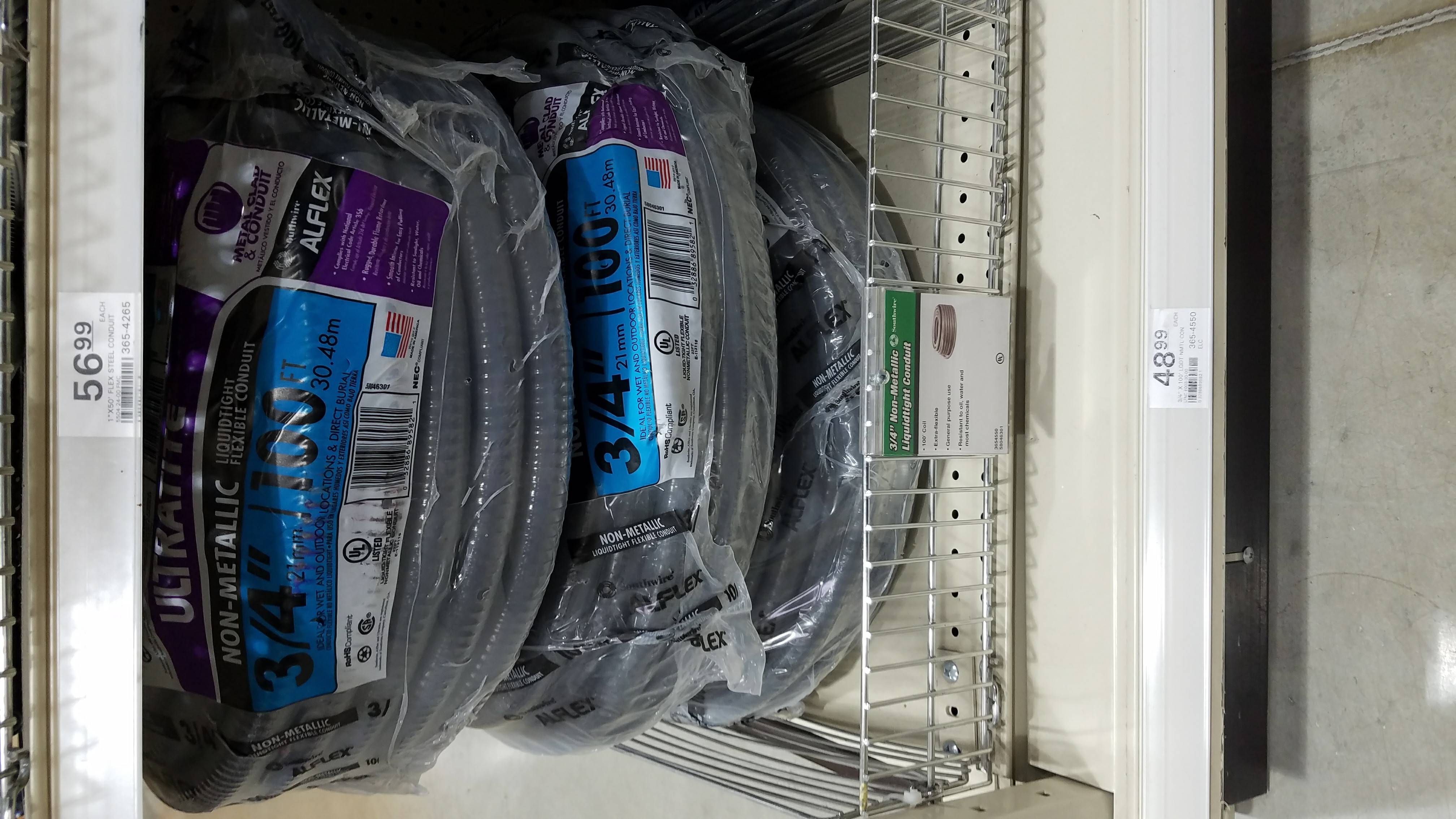How deep should liquidtight flex cable be burried for a 75 ft run for an outdoor circuit? I see pvc conduit is at 18 inches.
-
1Don't use liquid tight for direct burial, not to code in some types (many) and WAY more expensive.– Ed BealCommented Jun 23, 2017 at 16:11
-
@EdBeal I am on the fence between that and PVC. I came across this and started looking into it. The package does however state it complies with NEC 356.– eaglei22Commented Jun 23, 2017 at 16:19
-
It's also not liquid tight. Keeping water out of underground conduit is totally unrealistic, unless you pressurize it with nitrogen or something. (Since air would condense).– Harper - Reinstate MonicaCommented Jun 23, 2017 at 16:24
-
If you're going to dig a trench, why not both? Pull some comm wire while you're at it. Besides, you want a shovel to have hit the PVC first...– MazuraCommented Jun 23, 2017 at 16:26
-
2Start adding the liquid tight ends and it gets much more expensive plus wire is harder to pull in LT than PVC.– Ed BealCommented Jun 23, 2017 at 18:38
2 Answers
356.10 Uses Permitted. LFNC shall be permitted to be used in exposed or concealed locations for the following purposes:
Informational Note: Extreme cold may cause some types of nonmetallic conduits to become brittle and therefore more sus-ceptible to damage from physical contact.
(1) Where flexibility is required for installation, operation, or maintenance.
(2) Where protection of the contained conductors is required from vapors, liquids, or solids.
(3) For outdoor locations where listed and marked as suit-able for the purpose.
(4) For direct burial where listed and marked for the purpose.
Notice number 4.
Here is an excerpt from the UL Whitebook concerning LFNC
Flexible Nonmetallic Conduit, Liquid-tight (DXOQ) USE AND INSTALLATION
This category covers liquid-tight flexible nonmetallic conduit, in trade sizes 3/8 in. to 4 (metric designators 12 to 103) inclusive, for installation in accordance with Article 356 of ANSI/NFPA 70, ‘‘National Electrical Code'' (NEC).
This product may also be used for installation of conductors for electric signs and outline lighting in accordance with the NEC.
PRODUCT MARKINGS Liquid-tight flexible nonmetallic conduit suitable for direct burial and in poured concrete is marked ‘‘Direct Burial,'' ‘‘ Burial,'' ‘‘Dir Burial'' or ‘‘Dir Bur.'' Liquid-tight flexible nonmetallic conduit suitable for use outdoors is marked ‘‘Outdoor.''
According to Table 300.5 column 3 you would need 18" of cover. If you have a 120volt circuit that is GFCI protected you can reduce the cover to 12".
Notice the table reads "minimum cover requirements" NOT burial depth. With small raceways this is insignificant but larger raceway should be measured to the top of the raceway not the depth of the trench.
[Note: I had previously cited Article 350 which is LFMC not LFNC and referred to manufacturers information for burial depth which is actually covered by Table 300.5 of the code. Upon re-reading the Code I edited this answer accordingly adding the citation to the UL Whitebook. Hopefully this clarifies some things.]
Good luck and stay safe!
-
1@TheEvilGreebo - Where in the code does it say you can use "crush resistant" where it must be "For direct burial where listed and marked for the purpose."– MazuraCommented Jun 23, 2017 at 15:58
-
1
-
1"Marked" means the manufacturer must clearly mark the product or provide documentation with the product to clearly identify the product as suitable for the purpose. Crush resistant is not at all related to direct burial. Commented Jun 23, 2017 at 16:04
-
1@TheEvilGreebo if a crush resistant conduit was also fit and listed for direct burial, why on earth would the manufacturer keep that a secret and not simply mark it as such? Occam's Razor: they can't because it's not fit...... I get where most crush resistant conduit also says wet location. Most THHN wire is also THWN-2. The marks still matter, THHN is still not legal in wet locations. Don't replace skill with habit. Commented Jun 23, 2017 at 16:18
-
1@eaglei22 then you are golden. Now the burial depth is another issue but if you go 24" you will be good. Commented Jun 23, 2017 at 19:08
With all the fuss no one answered the question. The answer is if listed it can be at 18" the same as conduit. I would not use in this case but since listed it would be legal.

